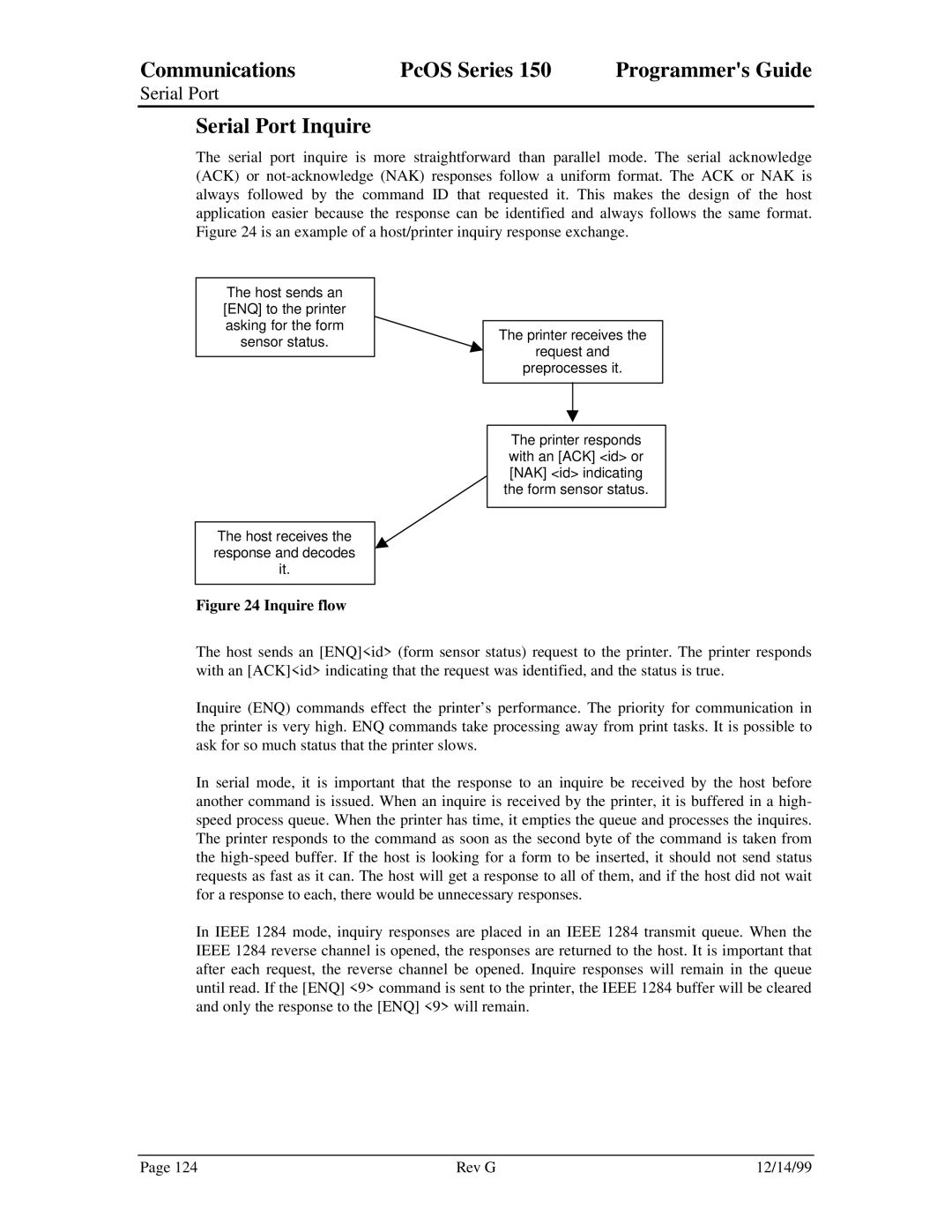
Communications | PcOS Series 150 | Programmer's Guide |
Serial Port
Serial Port Inquire
The serial port inquire is more straightforward than parallel mode. The serial acknowledge (ACK) or
The host sends an [ENQ] to the printer asking for the form sensor status.
The printer receives the
request and
preprocesses it.
The host receives the response and decodes it.
The printer responds with an [ACK] <id> or [NAK] <id> indicating the form sensor status.
Figure 24 Inquire flow
The host sends an [ENQ]<id> (form sensor status) request to the printer. The printer responds with an [ACK]<id> indicating that the request was identified, and the status is true.
Inquire (ENQ) commands effect the printer’s performance. The priority for communication in the printer is very high. ENQ commands take processing away from print tasks. It is possible to ask for so much status that the printer slows.
In serial mode, it is important that the response to an inquire be received by the host before another command is issued. When an inquire is received by the printer, it is buffered in a high- speed process queue. When the printer has time, it empties the queue and processes the inquires. The printer responds to the command as soon as the second byte of the command is taken from the
In IEEE 1284 mode, inquiry responses are placed in an IEEE 1284 transmit queue. When the IEEE 1284 reverse channel is opened, the responses are returned to the host. It is important that after each request, the reverse channel be opened. Inquire responses will remain in the queue until read. If the [ENQ] <9> command is sent to the printer, the IEEE 1284 buffer will be cleared and only the response to the [ENQ] <9> will remain.
Page 124 | Rev G | 12/14/99 |
